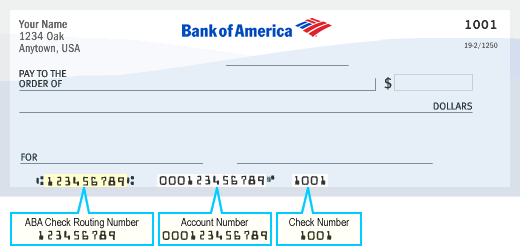
Fundamental concepts in the study of commerce include the Law of comparative advantage and Rent-seeking as well as economies of scale in manufacturing. They are essential to understand market structure and determine the value of a goods. In this article, you will learn more about these concepts and their impact on the exchange rate. This article will provide a detailed overview of these concepts and discuss a range of economic models. These models have often been explained in contradictory ways.
Production economies of scale
Economies in scale refer to the reduction of variable cost per unit by increasing production volume. Companies that produce Q2 units are experiencing economies. Economies in scale are when costs are distributed over a higher output range. This allows for a firm the maximum profit. Profit-maximizing companies always have the lowest production costs per unit. Firms must increase their production capacity as much as they can.
Economies are production that is larger than usual. This is possible through economies of scale, in which the unit labor required to produce the same amount of product falls as production scale increases. Figure 6.1 illustrates how the unit labor requirement drops with increasing scale. This means that a firm can achieve greater output without having to incur higher costs. Trade and production economies lead to higher levels of production.

Comparative advantage law
The Law of Comparative Advantage in Trade (LoCad) is a fundamental principle in free trade. According to the law, countries that have an edge in one or several production areas will be able to trade with those that do not. This advantage is often material but it can also take the form of capital. Due to global price shocks, an agricultural nation that focuses only on cash crops could be in a competitive disadvantage. Free trade benefits some countries, but it can also hurt others, and there are many human costs to this phenomenon, including the exploitation of their own workforces.
The Law of Comparative Advantage identifies the problems with protectionism. Countries will look for partners with comparative benefits in a free economy. Although removing a country from an international trade agreement and imposing duties may provide a short-term benefit, this won't solve the problem long-term. It will only make a country less competitive in international business and disadvantage it against its neighbors.
Rent-seeking
Rent-seeking has become a common term in the world of trade. Rent-seeking works on the principle that suppliers and consumers both want to maximize their profits. The same principle applies to tax officials, bureaucrats and regulators. These agencies were initially created to protect consumers. They now prioritise the industry's needs over those of the consumers. It is known as regulatory capture, where government officials try to influence markets through regulations.
Rent-seeking can be seen in the use of government lobbyists for influence on public policy and punishment of competitors. While this strategy clearly benefits the company hiring the lobbyists, it does little to add value to the larger marketplace. Rent-seeking, also known as coerced commerce, can take the form either of piracy, lobbying for government or giving away money. While there are exceptions to rent-seeking, this principle is a fundamental trade principle that has been around for millennia.

Chance costs
You can overlook the opportunity cost of upgrading an expensive car. An upgrade to $1,500 could make the difference between the base model's price and its upgraded version, which can be $18,500. When we think about the benefits of an upgrade, we tend to focus on its immediate benefits. Our decision-making process should take into account the longer-term implications of our choices. Below are the potential costs of trade and their implications.
Risk management is another way to look at opportunity costs. It is essential to take into consideration the opportunity cost of any investment when evaluating its risk. A stock that has a 25% annual risk is better than one that offers a higher return. However, option B has a lower return rate and risk profile than option A, but it's better to invest in a less-risky stock. If investment B fails, it will make option B more expensive.
FAQ
What type of investment vehicle do I need?
Two main options are available for investing: bonds and stocks.
Stocks can be used to own shares in companies. Stocks are more profitable than bonds because they pay interest monthly, rather than annually.
Stocks are the best way to quickly create wealth.
Bonds offer lower yields, but are safer investments.
There are many other types and types of investments.
They include real estate, precious metals, art, collectibles, and private businesses.
Can I make my investment a loss?
Yes, you can lose everything. There is no 100% guarantee of success. There are however ways to minimize the chance of losing.
Diversifying your portfolio is a way to reduce risk. Diversification helps spread out the risk among different assets.
Another way is to use stop losses. Stop Losses allow you to sell shares before they go down. This lowers your market exposure.
Margin trading is also available. Margin trading allows for you to borrow funds from banks or brokers to buy more stock. This increases your chance of making profits.
Should I purchase individual stocks or mutual funds instead?
You can diversify your portfolio by using mutual funds.
But they're not right for everyone.
You should avoid investing in these investments if you don’t want to lose money quickly.
Instead, you should choose individual stocks.
Individual stocks give you more control over your investments.
You can also find low-cost index funds online. These funds let you track different markets and don't require high fees.
How can I manage my risk?
Risk management refers to being aware of possible losses in investing.
An example: A company could go bankrupt and plunge its stock market price.
Or, a country could experience economic collapse that causes its currency to drop in value.
You could lose all your money if you invest in stocks
Therefore, it is important to remember that stocks carry greater risks than bonds.
One way to reduce risk is to buy both stocks or bonds.
By doing so, you increase the chances of making money from both assets.
Another way to limit risk is to spread your investments across several asset classes.
Each class has its unique set of rewards and risks.
Bonds, on the other hand, are safer than stocks.
If you are looking for wealth building through stocks, it might be worth considering investing in growth companies.
Focusing on income-producing investments like bonds is a good idea if you're looking to save for retirement.
Statistics
- They charge a small fee for portfolio management, generally around 0.25% of your account balance. (nerdwallet.com)
- Over time, the index has returned about 10 percent annually. (bankrate.com)
- Most banks offer CDs at a return of less than 2% per year, which is not even enough to keep up with inflation. (ruleoneinvesting.com)
- An important note to remember is that a bond may only net you a 3% return on your money over multiple years. (ruleoneinvesting.com)
External Links
How To
How to invest in Commodities
Investing is the purchase of physical assets such oil fields, mines and plantations. Then, you sell them at higher prices. This is called commodity-trading.
Commodity investing is based on the theory that the price of a certain asset increases when demand for that asset increases. The price tends to fall when there is less demand for the product.
When you expect the price to rise, you will want to buy it. And you want to sell something when you think the market will decrease.
There are three main types of commodities investors: speculators (hedging), arbitrageurs (shorthand) and hedgers (shorthand).
A speculator buys a commodity because he thinks the price will go up. He does not care if the price goes down later. A person who owns gold bullion is an example. Or, someone who invests into oil futures contracts.
An investor who invests in a commodity to lower its price is known as a "hedger". Hedging allows you to hedge against any unexpected price changes. If you are a shareholder in a company making widgets, and the value of widgets drops, then you might be able to hedge your position by selling (or shorting) some shares. That means you borrow shares from another person and replace them with yours, hoping the price will drop enough to make up the difference. When the stock is already falling, shorting shares works well.
The third type of investor is an "arbitrager." Arbitragers are people who trade one thing to get the other. For example, you could purchase coffee beans directly from farmers. Or you could invest in futures. Futures let you sell coffee beans at a fixed price later. You have no obligation actually to use the coffee beans, but you do have the right to decide whether you want to keep them or sell them later.
The idea behind all this is that you can buy things now without paying more than you would later. If you're certain that you'll be buying something in the near future, it is better to get it now than to wait.
There are risks with all types of investing. Unexpectedly falling commodity prices is one risk. Another risk is the possibility that your investment's price could decline in the future. This can be mitigated by diversifying the portfolio to include different types and types of investments.
Taxes are another factor you should consider. Consider how much taxes you'll have to pay if your investments are sold.
Capital gains taxes should be considered if your investments are held for longer than one year. Capital gains taxes are only applicable to profits earned after you have held your investment for more that 12 months.
If you don't anticipate holding your investments long-term, ordinary income may be available instead of capital gains. Ordinary income taxes apply to earnings you earn each year.
When you invest in commodities, you often lose money in the first few years. However, you can still make money when your portfolio grows.